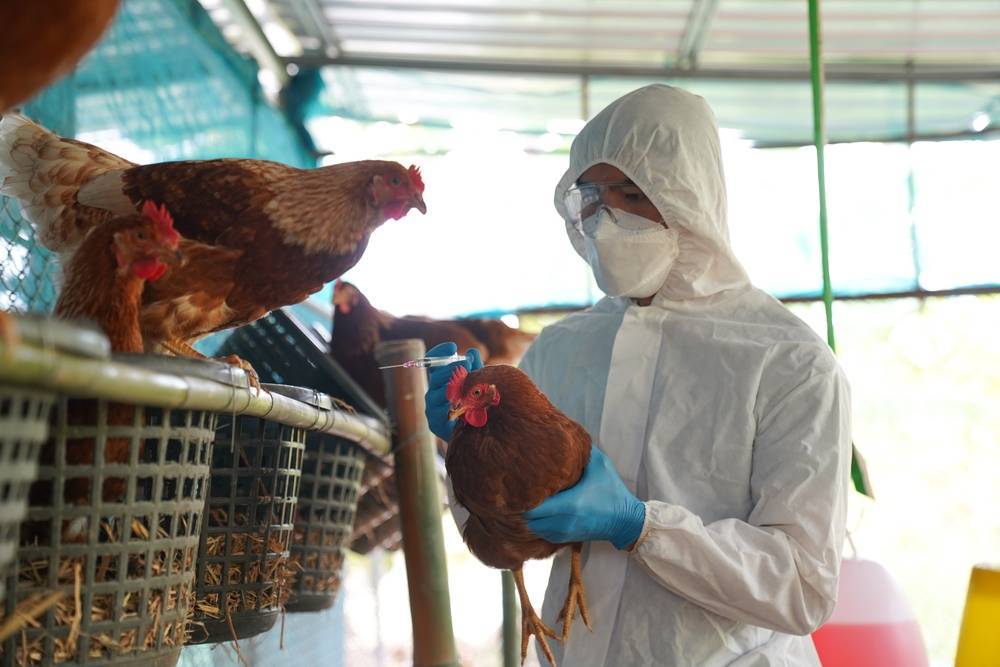The World Health Organisation (WHO) recently confirmed the first human fatality from the rare H3N8 subtype of avian influenza.
The 56-year-old woman from Guangdong, China, marked the third known case of H3N8 infection, following two cases reported last year. The WHO has stated that there is no evidence of person-to-person transmission of the virus.
Underlying Conditions and Exposure
The deceased patient had multiple underlying health issues and a history of exposure to live poultry. Sporadic human infections with bird flu are not uncommon in China, where the viruses circulate in extensive poultry and wild bird populations.
The woman reportedly visited a wet market before contracting H3N8, and samples collected from the market tested positive for influenza A(H3), indicating a possible source of infection.
What is Bird Flu?
Bird flu, also known as avian influenza, is a viral infection that primarily affects birds, including domestic poultry and wild birds. Although rare in humans, certain subtypes of the virus can lead to severe illness or even death.
Symptoms of bird flu include:
- Fever
- Cough
- Sore throat
- Muscle aches
- Respiratory failure (in severe cases)
- Organ dysfunction (in severe cases)
Preventing bird flu involves taking several precautions to minimise the risk of infection. Key prevention measures include:
Avoiding contact with infected birds: Stay away from live or dead birds in areas with known outbreaks, and avoid visiting live bird markets or poultry farms.
Practising proper hand hygiene: Wash your hands thoroughly and regularly with soap and water, especially after touching birds or their environments.
Ensuring safe food handling practices: Cook poultry and eggs thoroughly to kill any potential viruses, and avoid cross-contamination between raw and cooked foods.
By following these prevention measures, individuals can reduce their risk of contracting bird flu and help protect their communities.
H3N8 Subtype: A Rare Infection
The H3N8 subtype of avian influenza is relatively rare in humans, primarily affecting birds with few to no signs of disease. The virus has also been found in other mammals.
The WHO has not identified any additional cases among the close contacts of the infected woman, suggesting that the risk of human transmission remains low at the national, regional, and international levels.
Notable Bird Flu Outbreaks and Subtypes
Over the years, there have been several instances of bird flu outbreaks affecting both birds and humans. Some of the most notable outbreaks and subtypes include:
- H5N1: First identified in Hong Kong in 1997, H5N1 is a highly pathogenic avian influenza (HPAI) subtype that can cause severe illness and death in humans. Since its emergence, H5N1 has resulted in millions of bird deaths and culling, as well as hundreds of human infections with a high mortality rate.
- H7N9: First reported in China in 2013, H7N9 is a low pathogenic avian influenza (LPAI) virus that has caused severe respiratory illness and death in humans. Despite causing only mild or no symptoms in birds, this virus has resulted in numerous human infections and fatalities.
- H5N8: Primarily affecting birds, H5N8 is another HPAI subtype that has caused widespread outbreaks in poultry across Europe, Asia, and Africa. Although no human infections have been reported, the rapid spread of this virus in birds and its potential to mutate raise concerns about its potential impact on human health.
- H9N2: H9N2 is an LPAI virus that primarily infects birds, but it has occasionally caused mild respiratory illness in humans. First detected in China in the 1990s, human cases of H9N2 have also been reported in Bangladesh, Pakistan, and other countries.
- H7N7: Identified in the Netherlands in 2003, H7N7 is another subtype that has caused illness in both birds and humans. Although the outbreak was primarily confined to poultry, a few human cases of conjunctivitis and one death were reported.
These instances of bird flu highlight the need for ongoing surveillance and monitoring, as well as the implementation of control measures to prevent the spread of avian influenza viruses and their potential impact on human health.
Monitoring for Potential Pandemics
Constant monitoring of all avian influenza viruses is crucial due to their ability to evolve and potentially cause pandemics. Though the risk of H3N8 spreading among humans is considered low, vigilance in tracking the virus’s progress is essential to ensure prompt response and containment in the event of an outbreak.
Precautions and Awareness
As bird flu viruses can circulate among poultry and wild bird populations, it is vital to take precautions to avoid potential infection. This includes avoiding contact with live or dead birds, especially in areas with known outbreaks, maintaining proper hygiene, and adhering to safe food handling practices. Additionally, staying informed about the latest developments and advisories from health authorities can help individuals protect themselves and their communities.
Treatment and Vaccination
Although there is no specific treatment for H3N8 bird flu, antiviral medications may be effective in reducing the severity and duration of the illness. Vaccination against the virus is not currently available, but research and development efforts continue in the hopes of producing a vaccine to protect against this and other avian influenza subtypes.
The first human fatality from the rare H3N8 subtype of avian influenza serves as a reminder of the importance of monitoring and managing bird flu viruses. Although the risk of human transmission is low, continued vigilance and adherence to prevention measures can help minimise the potential for future outbreaks.

